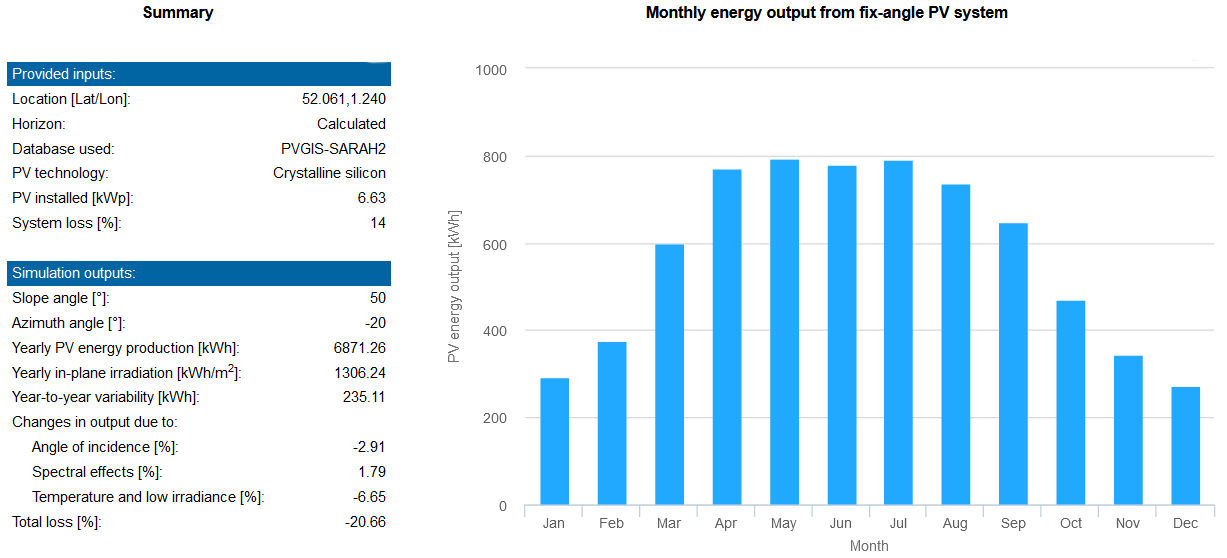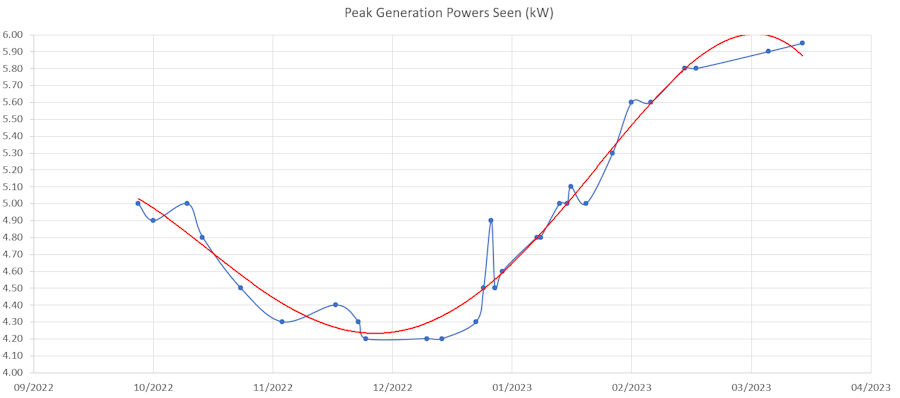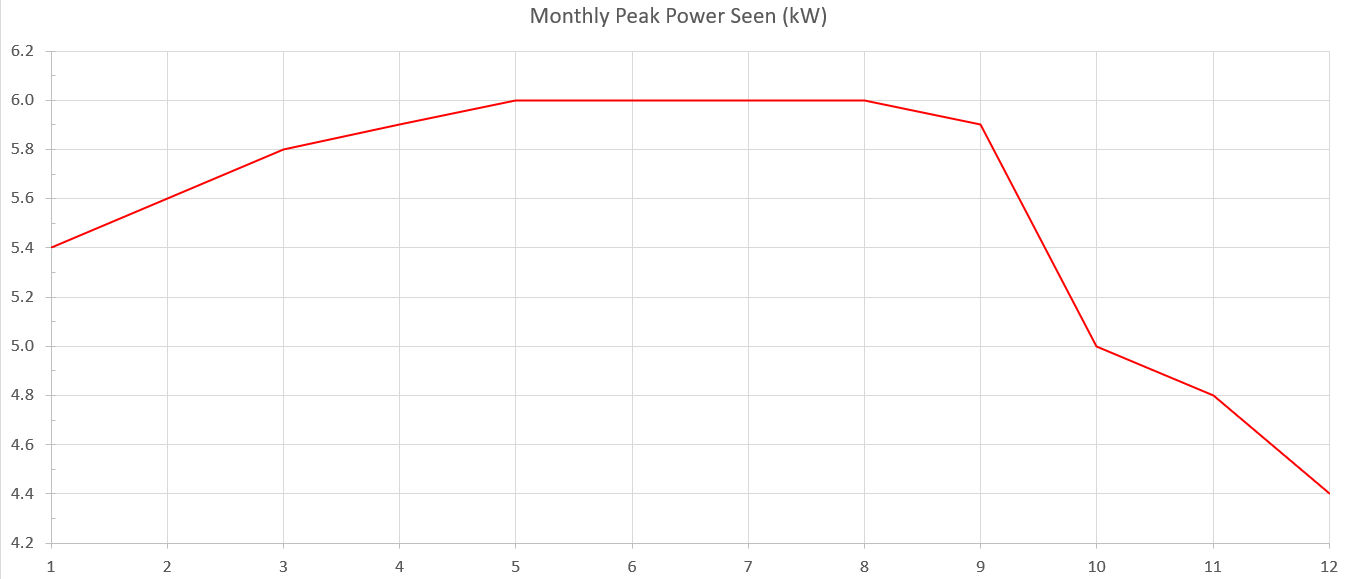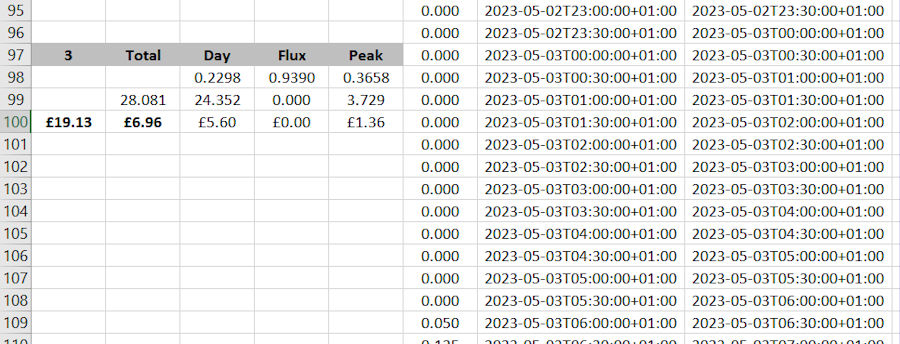Smart Home Energy Analysis
If you found this page useful you can buy me a coffee. This helps me maintain this website and add more content.
This is my analysis of the impact of my smart home solar installation project, which was started in October 2022. My Tesla Powerwall was added in April 2023. This page describes the main elements of my analysis and my rationale for my claimed returns and savings. My smart home solar installation project page describes the full scope of this project and it goes well beyond just solar panels and battery storage. I am planning to increase our electricity usage above our historical consumption, to improve our quality of life, power our transport, reduce our gas usage, power air conditioning, etc. This is why our planned Return On Investment (ROI) is much shorter than that achieved by simply replacing our historical electricity usage with free solar energy.
I am confident that by using my contextual smart home to implement smart energy management, I can maximise my Return On Investment (ROI) and hit my ambitious payback period. Initially, I was aiming for payback in about 5½ years but, tariff changes and new tariffs have changed to ways we save energy and have pushed this out to about 6 years now. This means making savings of about £320 per month. An example of this is the Octopus Flux tariff, where using solar energy to heat our hot water no longer makes financial sense.
My cost savings are simply based upon measuring the extra money in my bank account having undertaking my smart home solar installation project, compared to what we would have in our bank account if we had done nothing and stayed on the standard variable electricity and gas tariffs with our energy supplier (Octopus Energy). An EV, solar panels and battery storage allow you to utilise to a tariff that simply would not make sense without one of more of these elements.
The returns/savings for each year and month are covered in detail:
| 2024 | £TBC | |
| April | £TBC | New Octopus Flux tariff prices. |
| March | £274.17 | Moved to Gas Tracker tariff. |
| February | £226.29 | A mild month. |
| January | £249.83 | |
| 2023 | £3734.92 | An average of £311.24 per month. |
| December | £220.15 | A mild month. |
| November | £298.08 | |
| October | £404.73 | |
| September | £271.31 | Better than expected. |
| August | £323.00 | Quite a wet month. |
| July | £305.61 | A very wet month. |
| June | £416.88 | Best month for solar generation with 1013kWh generated. |
| May | £427.56 | First whole month with Tesla Powerwall |
| April | £325.56 | Tesla Powerwall installed |
| March | £232.35 | |
| February | £249.09 | |
| January | £247.16 | |
| 2022 | Total£997.75 | |
| December | £171.18 | |
| November | £316.06 | |
| October | £156.08 | Solar panels installed |
| September | £194.07 | |
| August | £160.36 | CUPRA Born collected |
| Electricity | Gas | |
| January | 528kWh | 3088kWh |
| February | 433kWh | 2041kWh |
| March | 387kWh | 2012kWh |
| April | 392kWh | 1460kWh |
| May | 382kWh | 1029kWh |
| June | 346kWh | 512kWh |
| July | 380kWh | 509kWh |
| August | 377kWh | 514kWh |
| September | 373kWh | 619kWh |
| October | 443kWh | 1220kWh |
| November | 486kWh | 2130kWh |
| December | 539kWh | 2784kWh |
Expectations & Predictions
My background is smart home and not solar energy, so this is very much an experiment for me. The first year is very much about gathering real data and gaining insight into how things are working. From this, I can do the analysis and optimisation, to make things work more efficiently.

It is possible to predict the monthly energy generation for our solar installation, configuration and location, using tools like European Union PVGIS service.
It predicts the following monthly figures: Jan = 291kWh, Feb = 375kWh, Mar = 599kWh, Apr = 771kWh, May = 793kWh, Jun = 780kWh, Jul = 790kWh, Aug = 735kWh, Sep = 648kWh, Oct = 469kWh, Nov = 344kWh, Dec = 272kWh
A much better prediction of daily generation comes from my daily Solcast forecast. It will be interesting to see how well these two services align.
Electricity
There are five main ways to maximise our Return On Investment (ROI) when it comes to electricity:
- Replace imported energy with free solar energy, minimising our import of energy.
- Time shift our electricity usage so that we only ever import cheap rate energy from our energy provider. Our Tesla Powerwall ensures we only never pay for peak rate electricity for the tariff we are on.
- Replace our gas usage with free or cheaper electricity. We currently use gas for both hot water, central heating and cooking.
- Export excess electricity generated and get paid for it. This is a significant element from April to October each year.
The key numbers that I want to collect on a monthly basis are:
- Energy consumed by our home = home usage
- Energy generated
- Energy put into our EV and the source of energy
- Energy imported into our home
- Energy imported into our EV
- Energy exported
- Energy used by my smart immersion heater controller
Our savings are calculated by working out what we would have spent on the standard variable tariff given our historical baseline usage for each month. This then factors in all of the changes we have made as part of this project. Big electricity savings are made by being on the right tariff. As part of my smart home solar installation project, we purchased a CUPRA Born and this meant we could move to the Octopus Go tariff over winter. We are using the Octopus Flux tariff over the sunnier months. Big savings come from shifting as much usage as possible to the cheap rate time window.
Home Usage
Our home usage is what our home consumes each day. Historically, this was easy to work out as we have solar panels, battery storage or EV charger and so we have very good data on our historical baseline figures. It includes things like electric cookers, heating pumps, lighting, etc.
With the progression of our smart home solar installation project, things got a little more complicated as we had to factor in things like our Tesla Powerwall charging overnight, our CUPRA Born charging overnight and also using solar energy during the day. Fortunately, the Tesla app provides a figure that we can use to calculate this accurately still.
Gas Usage
The main way I can see to save money and use less gas, is to pre-heat our hot water tank using its 3kW immersion heater, to minimise the time the gas boiler operates. I have designed and built my own smart immersion heater controller. This can use both spare solar energy and cheap rate electricity. This only makes financial sense on certain tariffs.
As I do all the cooking in our home (I love cooking!), I can also change the way I cook food. I have started using an electric slow cooker, an electric rice steamer and an air fryer.
The only way to really quantify any savings, is to measure monthly usage against out historical monthly baseline usage. There will be variations due to the variable weather but, these will be averaged out over many years.
Transport
I monitor exactly how much we spend on petrol each month and we also spend money on petrol for fun driving. The best way to assess how much we have saved by using an EV, is to measure how many miles it does. The saving can then be calculated against what it would have cost to do the same number of miles in an ICE car. Assuming our we know the average mpg achieved and the petrol cost in each given month, we can calculate how much we have saved each month. For example, in July 2022, 500 miles driven in our EV would result in a saving of about £118.20.
My initial estimate was that we would save about £120 a month simply by using less petrol but, we are currently averaging about £170 per month. We all love our CUPRA Born and it is already being used for more than 95% of our journeys. I'm also monitoring how much electricity we put into our EV.
I get asked why I'm not including the cost of my EV in my calculations but, I am. I'm including the difference between our comparable ICE car and our EV over a 3-year period of ownership. We need a car, regardless of how it is powered and only a 'like for like' comparison makes sense. The difference is actually quite small when you compare the cost of ownership for our CUPRA Born and Mazda CX-30, which are very similar in terms of size, performance and specification. Our Born is cheaper to insure, maintain and service. Over 3 years of ownership, our Born is costing us just £1840 more. This also doesn't factor in the residual values and these are harder to quantify but, it makes the difference even less from what I can see.
Quality Of Life
As well as saving money, my smart home solar installation project will actually increase our energy usage, in order to improve our quality of life. We are installing ait-conditioing in our main living space, main bedroom and our conservatory. We also plan to install a hot tub in 2023.
This includes our "pets" too. In December 2022, I spent about £8 running a smart pond heater, to keep our pond ice free and our goldfish happier 😊
Solar Irradiance
I've seen some interesting comments in the solar Facebook groups where people claim they have seen higher peak power output than their panels are rated for, even in March. This is clearly a measurement error because the sun is not very strong in the UK, outside of the summer months. It simply too low in the sky and the Earth's tilt means the sun is still having to pass through a lot of atmosphere to reach us. There are tools that allow you to estimate the solar irradiance for each month of the year in your location, such as this Footprint Hero Solar Irradiance Calculator.

Using the Enphase data logged, I have recorded the peak power seen on days when solar production is high, to gain some insight into what the solar irradiance looks like. I've used this data as it is coming direct from the microinverters attached to my panels and is therefore more accurate.

These are the highest monthly peak powers I have observed so far. I've not data for the summer month yet but, I am assuming my Enphase microinverters will be clipping the peak to about 5.93kW and I started to observe this in early April.
This data validates my choice of equipment nicely. Generation is good through winter and my 6.63kW of solar panels are not causing my Enphase microinverters to clip the power generation at all through the winter months. They do limit my peak power to 5.93kW from April onwards though.
Conversion Losses
By comparing our current usage with our historical usage we are measuring the benefits based on energy imported from the grid (i.e. a fixed point of reference) and so we are inherently including any energy conversion losses between the solar panels, Enphase microinverters, Tesla Powerwall, etc.
If our home historically used 10.5kWh per day and it now uses 4.5kWh per day, then we must be saving 6kWh per day. If I then download my Octopus Energy import and export meter data (which is broken down into 30-minute slots), I can put an exact cost on the energy imported/exported based on my current tariff. From this I can quantify my financial savings down to the penny.
If all you did was time-shifting of your energy use by using only battery storage, then it is likely that your total daily energy usage will be slightly higher due to conversion losses. But by taking the same approach, you can still ignore these conversion losses and work out the financial gain from time-shifting to the penny.

I use a Microsoft Excel spreadsheet template for each month, into which I paste my downloaded meter data. This tells me exactly how much energy I imported and exported in each tariff rate period and the total daily cost/revenue. These numbers feed directly into my Return On Investment (ROI) calculations.
Downloads
- 2023_05_Import_Export.xlsx
- My Microsoft Excel spreadsheet for May 2023 into which you can paste your Octopus Energy import and export data downloaded from their website. This will then use the Octopus Flux tariff prices to calculate how much you paid and earnt each day. It also maintains a running today for the month.
If you found this page useful you can buy me a coffee. This helps me maintain this website and add more content.
Further Reading
My Features
My Projects
- Smart home solar energy project.
- Smart home energy modelling project.
- Smart home energy management project
- Enphase Microinverters In My Solar Energy Project
- Tesla Backup Gateway smart home integration project.
- Smart solar immersion heater control project.
My Reviews




